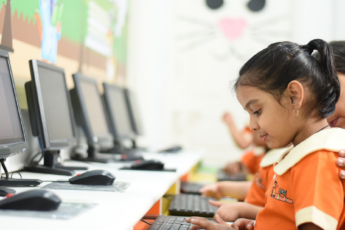Social Media’s Impact on Education

Social media has changed the way we communicate with one another, and as a result, the way we learn. Although social media has impacted our world in many ways, its impact on education deserves special attention.
In today’s world, students are exposed to more information than ever before. Students can access articles, videos, and photos from all over the world at the touch of a button. From online classes to the ability to communicate with teachers and peers, social media is changing the way children learn. It has made it easier for students to interact with their teachers and peers. Through social media students can ask questions and stay up-to-date on coursework. Students can also use social media as a tool to find information when they have a doubt in class. They can also understand concepts that were not covered in class.
Social media has had a profound impact on education. Here are some of its effects.
For Students
Social media platforms like Facebook & Twitter allow users to interact with others in their network through comments or posts. This helps them expand their knowledge base by exposing them to new ideas or perspectives on topics they might not otherwise encounter in their day-to-day lives.
For example: A student interested in politics may start following political figures on Twitter. This way they will see a variety of opinions held by different people within their social circle. This is important, as it helps students understand that there are many ways of thinking. While some ideas may be more popular than others, they are all valid in their own right.
Social media has also become an important tool for student learning. It gives kids access to information they may not find anywhere else. Examples of this are peer-reviewed articles from experts in their field of interest, podcasts from experts in other areas, videos from around the globe that showcase different countries’ cultures, and more. A study reveals that TikTok has become a popular medium for learning pronunciation among students.
Another benefit of social media platforms is that they allow students to connect with others who share the same interests and hobbies as them. For example: A student who loves photography would follow a photographer on Instagram who has similar interests. This allows students to gain inspiration from other artists, which helps them develop their own style of art and become more confident about what they post online.
In addition to allowing students to access high-quality education, which they might not have been able to do due to physical distance or financial constraints, it also allows them to enter into fields where there is high demand, but low supply.
While social media can be a great educational resource, it is essential to keep learners safe online. Check out this webinar addressing the cybersecurity of students.
For Educators
Additionally, social media is changing how educators teach. Teachers are using social media as a tool for creating lesson plans and communicating with students outside of school hours. According to a recent study, teachers and professors are finding new, innovative ways to use social media to engage students and further their educational development.
Teachers are using social media to connect with other educators and share ideas about teaching methodologies or best practices. They can also use these platforms to see what their peers are doing in other schools across the country or around the world. It can help them improve their own teaching style — especially when it comes to incorporating new technologies into their classrooms.
In fact, many schools now have policies in place that encourage teachers to use social media as part of their curriculum. Schools want teachers to utilize the wealth of resources available on platforms like YouTube and Twitter. They use it as a way to communicate with families about school events and policies.
Another benefit of social media is its ability to help teachers create engaging lessons that engage students holistically through interactive activities like quizzes or polls, which can be accessed via mobile devices. Teachers can also use social media tools like Twitter or Instagram to share interesting articles or videos with their classes so that everyone stays up-to-date on current events.
Teachers are using social media to reach out to parents, who are more involved in their children’s education than ever before. Parents are also able to use this technology to ask questions about schoolwork or assignments and receive answers from their child’s teacher immediately.
In these ways, social media helps reshape our understanding of the world around us. It constantly reveals new ways in which to further education for all.
Square Panda’s programs and services equips children with the knowledge and skills needed for successful classroom learning, and consequently empowers them to embrace lifelong learning in dynamic environments. Moreover, we empower teachers to contribute significantly in this regard, augmenting the student learning experience.
To know more about our varied methodologies and pedagogical approaches, visit ecce.squarepanda.in




Leave a Comment